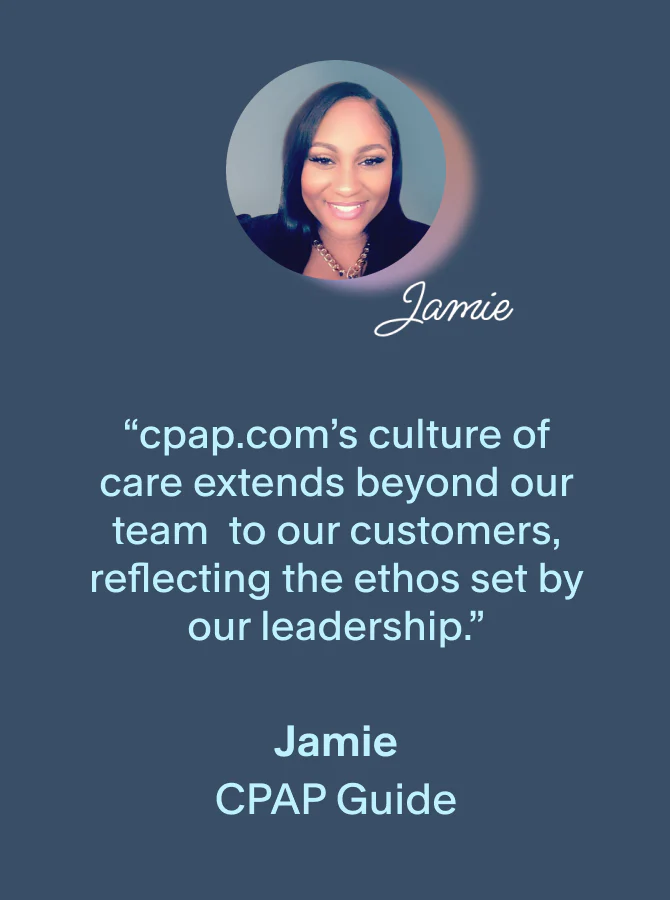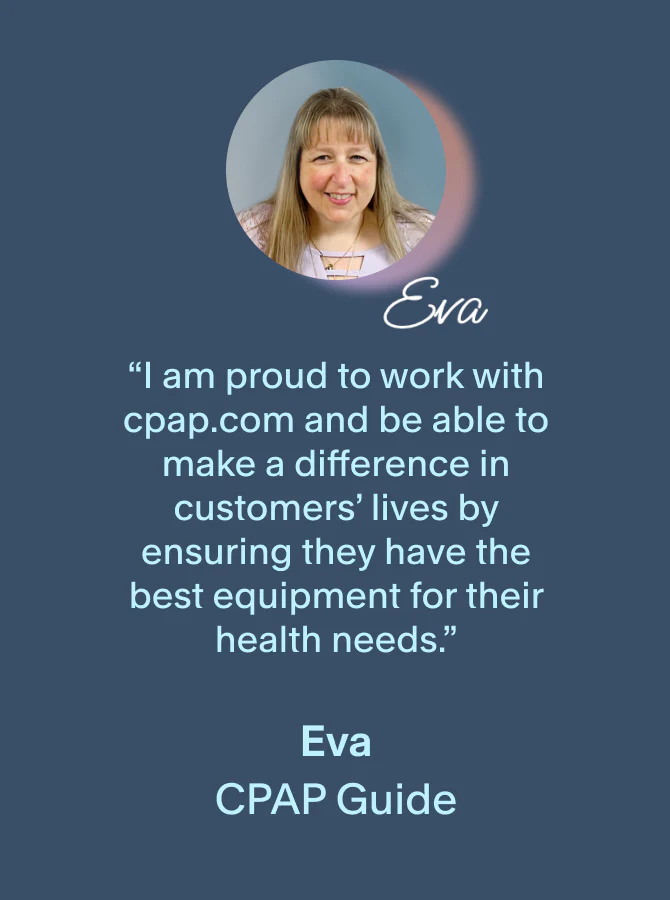If you’ve ever woken up to a gurgling sound in your CPAP hose or felt water droplets in your mask, you’ve experienced CPAP rainout. While it’s definitely uncomfortable, many people wonder if CPAP rainout is dangerous.
The short answer is no, but ignoring it can lead to some unwanted health risks and equipment issues.
In this guide, we’ll explain when water in your CPAP equipment becomes a problem, how to keep yourself and your equipment safe, and what you can do to prevent CPAP rainout before it disrupts your sleep.
Table of contents
What is CPAP rainout?
CPAP rainout happens when warm air full of moisture leaves your CPAP machine’s heated humidifier chamber and then cools as it travels through your CPAP hose, causing that moisture to change from water vapor to droplets. This leads to water buildup in your tubing or CPAP mask.
Is CPAP rainout dangerous to your health or equipment?
While having water in your CPAP may be annoying, CPAP rainout is not considered dangerous. In fact, it’s pretty common for people who use sleep apnea machines . But it can complicate your therapy, potentially causing your CPAP tubing to harbor germs and potentially affecting your therapy and equipment.

Can CPAP rainout cause respiratory issues?
Rainout itself isn’t harmful, but leftover moisture can create a breeding ground for CPAP mold and bacteria if your equipment isn’t cleaned properly. Breathing through damp, unclean tubing increases your risk of respiratory infections and sinus inflammation after using your CPAP device.
Is inhaling moist air or water harmful?
Inhaling humidified air isn’t just safe, it’s actually beneficial for most people who sleep with a CPAP machine. The danger comes from stagnant water sitting in your hose or mask overnight, which can harbor germs if not addressed.
In rare cases if the rainout is so bad, there is a chance of inhaling larger droplets of air from time to time. While you aren’t at risk of drowning from using a CPAP machine, inhaling some of these larger droplets can be pretty uncomfortable and may lead to further irritation in your airway or sinuses.
Can rainout damage my CPAP machine or mask?
Excess water can interfere with airflow, cause mask leaks. Additionally, if your rainout is bad enough it can potentially cause moisture to back up into your CPAP machine, potentially damage sensitive hardware. Over time, frequent rainout can also wear down your tubing and CPAP mask seals.
When does water in your CPAP hose become a problem?
Gurgling sounds or popping in your hose or mask
Waking up coughing or choking on water droplets
Feeling water splashing your face
Seeing more moisture than normal when you remove your mask
Large, visible water droplets in your tubing
How to prevent CPAP rainout from becoming dangerous
Keep equipment dry: Allow your CPAP hose, mask, and humidifier chamber to fully dry after every therapy session to prevent bacteria buildup.
Maintain a consistent cleaning schedule: Wipe or wash your mask each day. Clean all of your CPAP equipment, including tubing and water chamber, with soap, warm water, and distilled vinegar.
Adjust room temperature: Increasing the temperature around your CPAP equipment helps minimize the temperature change that occurs when your CPAP air leaves your machine.
Use a heated hose: Heated CPAP hoses keep the air temperature consistent from the moment it leaves your CPAP machine until it enters your CPAP mask, reducing the chances of experiencing rainout while maintaining humidity levels.
Wrap your CPAP hose: If you don’t want to purchase a heated hose, wrapping your hose in a towel, blanket, or even a specially designed hose cover can help insulate your tubing to prevent rainout.
Store and position your CPAP properly: Place your machine slightly lower than your mattress to prevent water from flowing into your mask.
Replace old equipment schedule: Replacing your CPAP equipment on time prevents air leaks, humidity issues, build-up, and other issues that arise with worn out equipment.
Frequently asked questions
Can CPAP rainout cause lung infections?
If equipment isn’t cleaned, yes. Stagnant water in your CPAP machine can grow mold and bacteria, increasing your risk of infection.
Is it safe to sleep with water in my CPAP hose?
If you're seeing clear signs of rainout, it's best to stop therapy momentarily and drain your hose to avoid therapy disruptions.
How often should I clean my CPAP to avoid rainout risks?
You should wipe or wash your CPAP mask each day and rinse and hang your CPAP tubing to dry. Once a week you'll need to deep clean your CPAP equipment with soap and warm water. If your equipment is safe to be cleaned with vinegar, we suggest using a diluted vinegar water solution for ultimate germ fighting.
Final thoughts
CPAP rainout isn’t inherently dangerous, but it can cause problems if ignored. With regular cleaning, proper equipment setup, and a few smart accessories like heated tubing, you can keep rainout under control and sleep soundly. Remember, staying proactive is the key to safe, effective CPAP therapy.
Need help? Contact us!
- Call: 1-800-356-5221
- Email: support@cpap.com
- Chat: Connectwith a CPAP Guide through our website or app














